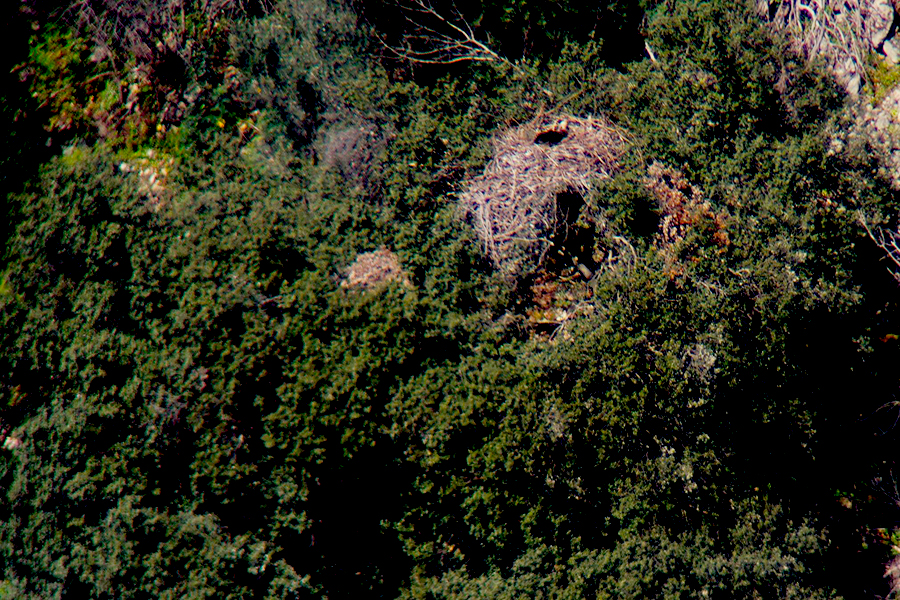
An adult Cinereous Vulture, a breeding bird in the province of Salamanca in Spain, has been fitted with a GPS transmitter two weeks ago. The Vulture Conservation Foundation (VCF) and our partners have been installing GPS transmitters to vultures to monitor and conserve vulture species as part of our European-wide efforts.
Monitoring Cinereous Vultures
A GPS transmitter weighs only a few grams, and yet it provides invaluable information that will help inform more accurate conservation actions. With the data provided, we understand the movements, foraging ranges and habits of these birds, which allows us to detect when the vultures are no longer moving and potentially injured. The data also reveals any threats the vultures may face during travelling, providing insights that will allow conservationist to carry out actions that reduce risks and help support the species comeback in the area.
With the generous funding and support of the MAVA Foundation, the VCF has already deployed 12 tags on Cinereous Vultures in Portugal – 5 nestlings from the Douro and Contenda colonies, and 7 Cinereous Vultures coming from wildlife rehabilitation centres, to try to monitor the growing Cinereous Vulture population there.
Cinereous Vulture populations in Portugal and Spain
Cinereous Vultures became extinct as a breeding species in Portugal in the 1970s, mostly due to the widespread use of poisoned carcasses targeting unwanted predators. This practice is now illegal and hopefully decreasing. An expanding population in Spain (where the species increased from 250 pairs in the 1980s to 3000 pairs now) saw the species regularly visiting Portugal to forage, with the first pair breeding recorded in central Portugal (Tejo Internacional) in 2010 (where now there is a small colony of about 20 pairs), and then in the Douro canyon in north-eastern Portugal (two pairs there now). In 2015 the species recolonised Herdade da Contenda in south-eastern Portugal and has bred there successfully ever since, currently hosting at least ten breeding pairs.
Tagging and releasing the breeding adult
Two weeks ago, we received a call saying that an adult bird, with a Portuguese metal ring, had been picked up exhausted near Salamanca, western Spain, close to the Portuguese border, and have sprung to action. The bird in question had been ringed in the Algarve (in the far south of Portugal) on 11 January 2006, after entering a wildlife rehabilitation centre, and showed some signs it was probably incubating eggs, as it had a brood patch (a patch of featherless skin on the underside of birds that breeding birds have to keep the eggs warm). After being contacted by the Department of Fauna and Flora from the Salamanca province in Castilla y León, the VCF quickly sent a transmitter with an experienced handler to tag the Cinereous Vulture. The bird was released less than 48 h after being found and after a veterinary check-up cleared it.
The Spanish agents that found and treated the bird named it Jacinto – and as expected, Jacinto duly returned to a known breeding colony in the province of Salamanca, one of the most northwesternmost colonies in Spain and the closest to the Douro breeding colony. It will be very important to follow the movements of this tagged bird – it is relatively rare to be able to follow breeding adults, as most birds captured are either nestlings or immatures.
Due to the sensitivity of the nesting period, the map with its movements will not be made public, but you can follow the movements of other tagged Cinerous Vultures on our online public maps.
Working for the recovery of Cinereous Vultures
With the recovery of the species in Spain, there has been a range of conservation projects supporting the conservation of the Cinereous Vultures in Portugal, such as the cross-border LIFE Rupis project in the Douro Canyon. The LIFE Habitat Lince Abutre, which came to an end in 2014, also established a network of 10 feeding sites and constructed 30 artificial nesting platforms in southern Portugal, which were instrumental to the successful breeding of pairs in Contenda.
Wildlife rehabilitation centres like the one run by the Junta de Castilla y León where this bird was treated also play an important role in the efforts to conserve Cinereous Vultures and other vulture species, as they often receive and rehabilitate injured or weakened vultures that are found across Iberia.
The VCF would like to thank the staff from the Junta de Castilla y León and Oriolus for their help and support. All together for Vultures!












